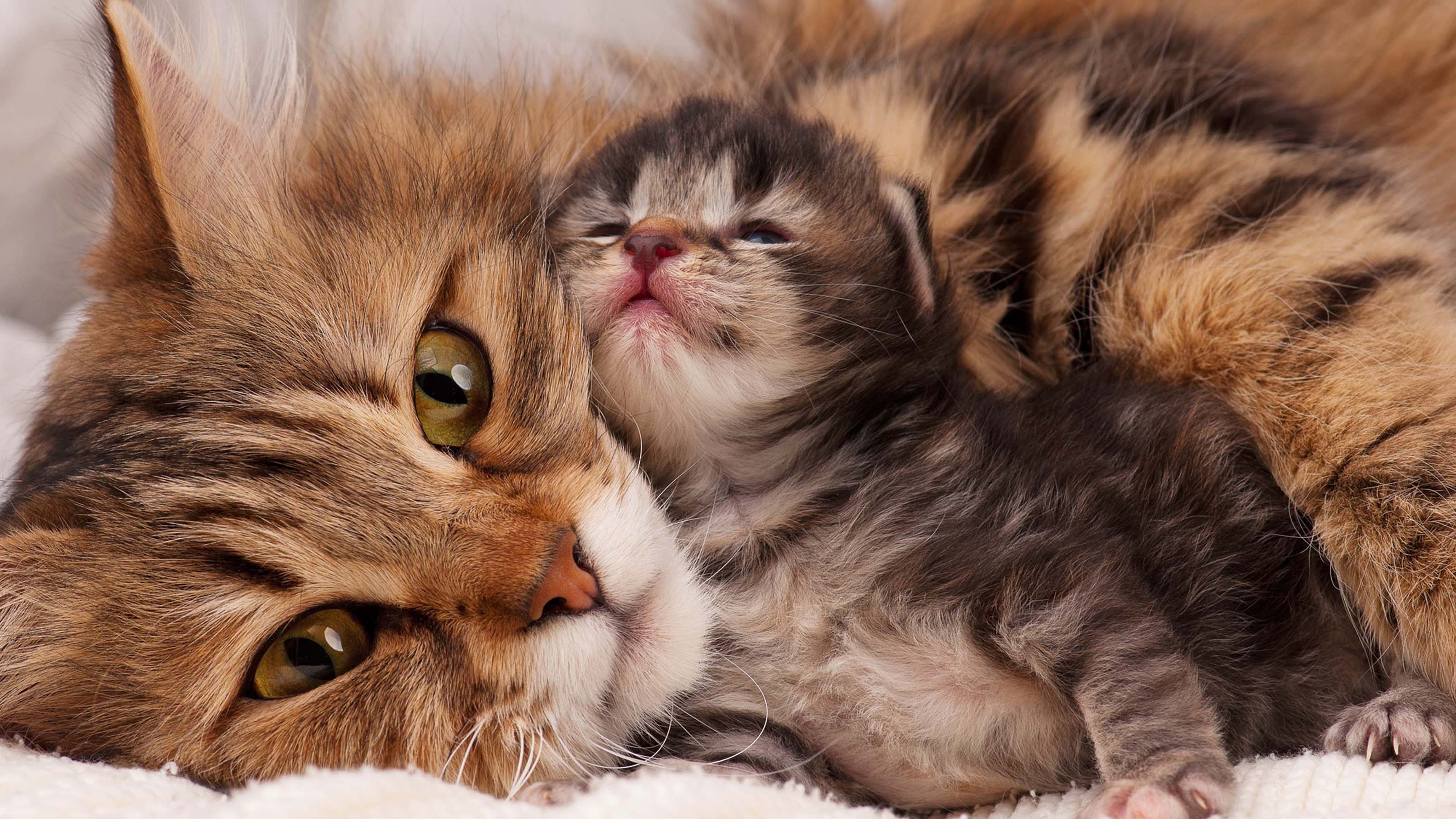
Introducing Kittens To Adult Cats
While cats can live very happily together in the same household, they don’t really ‘need’ other cats, and some may struggle to accept a new kitten.
While cats can live very happily together in the same household, they don’t really ‘need’ other cats, and some may struggle to accept a new kitten.
A few preparations ahead of your kitten’s arrival and some carefully managed introductions should give your cats the best chance of getting on well in future.
How to introduce a kitten to an adult cat
Make sure you have enough bowls, scratching posts and litter trays. Having one more litter tray than there are cats is a good plan. Cats may not be happy to share a litter tray and they often don’t like to use one that isn’t clean.
Place each cat’s resources in their own place, keeping food, water and litter apart. Make sure your existing cat(s) know where to find their usual trays and think about where you could site a tray for your kitten, to ensure that nobody feels put out about someone else using their toilet!
Consider running a cat pheromone diffuser, starting a couple of weeks before the kitten arrives. Cat ‘friendly pheromones’ can help to make cats feel relaxed and happy. The products also come as a spray, which you can use in places your cats like to go, such as beds, high perches and hidey-holes.
Helping your existing cat to feel as relaxed as possible before introducing a new member of the family is a great start.
To begin with, it’s a good idea to confine your kitten to one room that you can ‘kitten proof’ – so make sure there are no live phone-charging cables, plants to nibble, open windows, etc. This way, your other cat will have the freedom to move around your home without being followed and can feel comfortable that their food and other resources aren’t going to be stolen by your new arrival.
Once your kitten is settled in, you can prepare to introduce them to your other cat. Before your cat and kitten meet face-to-face, it’s a good idea to introduce them to each other’s scent. Use an old tea towel or similar for each cat. Stroke each cat with ‘their’ tea towel, paying special attention to their face and cheeks.
Next, swap tea towels by offering the kitten’s tea towel to your older cat. Place the towel on the floor and allow your cat to inspect it. They will probably give it a good sniff, although some may not appear to notice there’s a new scent on it at all. Others may stiffen or bristle when sniffing the kitten’s tea towel. Different cats will take more or less time to appear to accept a new scent, so repeat the process over a few days if necessary.
Once your older cat appears comfortable around the kitten’s scent – you might see them lie down on the kitten’s tea towel – you can try offering your cat the opportunity to rub their face and body along the kitten’s tea towel. Hold the towel in your hand and allow your cat to choose whether to come along and rub against it. This swapping and mixing of scents can help cats to feel they belong to the same social group. Once your cat is happy to do this, you can move to the next step.
At some point, your older cat will see your new kitten. Initially, it’s a good idea to set this up so that your older cat can choose to move towards or away from your kitten without being followed. Little kittens still have to learn about social interactions and older cats may give out subtle signals that they don’t want to be followed. If the kitten doesn’t recognise the signals, it may lead to a less gentle message from your older cat.
A good way to manage this is to have a stair gate across the door to the kitten’s room, or to pop the kitten into a large puppy crate containing a comfy bed, a box to hide in and all their resources, and let your older cat into the room so that they can approach the kitten freely. In a similar way to that in which you introduced the kitten’s scent, you can then allow your cat to get used to the idea of having another cat in the family.
Once your older cat is behaving in a relaxed way around your kitten, you can allow your kitten supervised freedom around your older cat. Make sure your older cat can still get out of your kitten’s way if they need to, by providing high places they can climb or jump to, or by using a barrier like a stair gate that you know your cat can climb over, if needed.
Given time, many cats will accept a new kitten. When you think your older cat is comfortable around your kitten, you can start to let your kitten have more freedom, under supervision.
By now, your kitten will probably be able to get back to their own litter tray when they need it and they’ll also know where to look for their other resources. It’s not ideal for adult cats to eat kitten food, or for kittens to eat food designed for adult or elderly cats.
Your other cat will probably dislike it if your kitten comes along and eats their food. To prevent anxiety about sharing resources, place your older cat’s resources out of reach of your kitten, or consider investing in a special feeder that can detect microchips and only allows the pet for whom the food is intended to use it.
If your older cat accepts your kitten, you may find that, in time, they agree to share resources or beds. Cats who get on really well may even use a bed at the same time, while others may have a ‘time share’ arrangement, taking turns to use it.
Introducing your new arrival at a pace that suits your older cat should give them the best chance of having a good relationship as your kitten grows up.
